Bruno Compagnet looks back on his years of marauding in the Dolomites or how a woman’s love can lead to the love of a country.
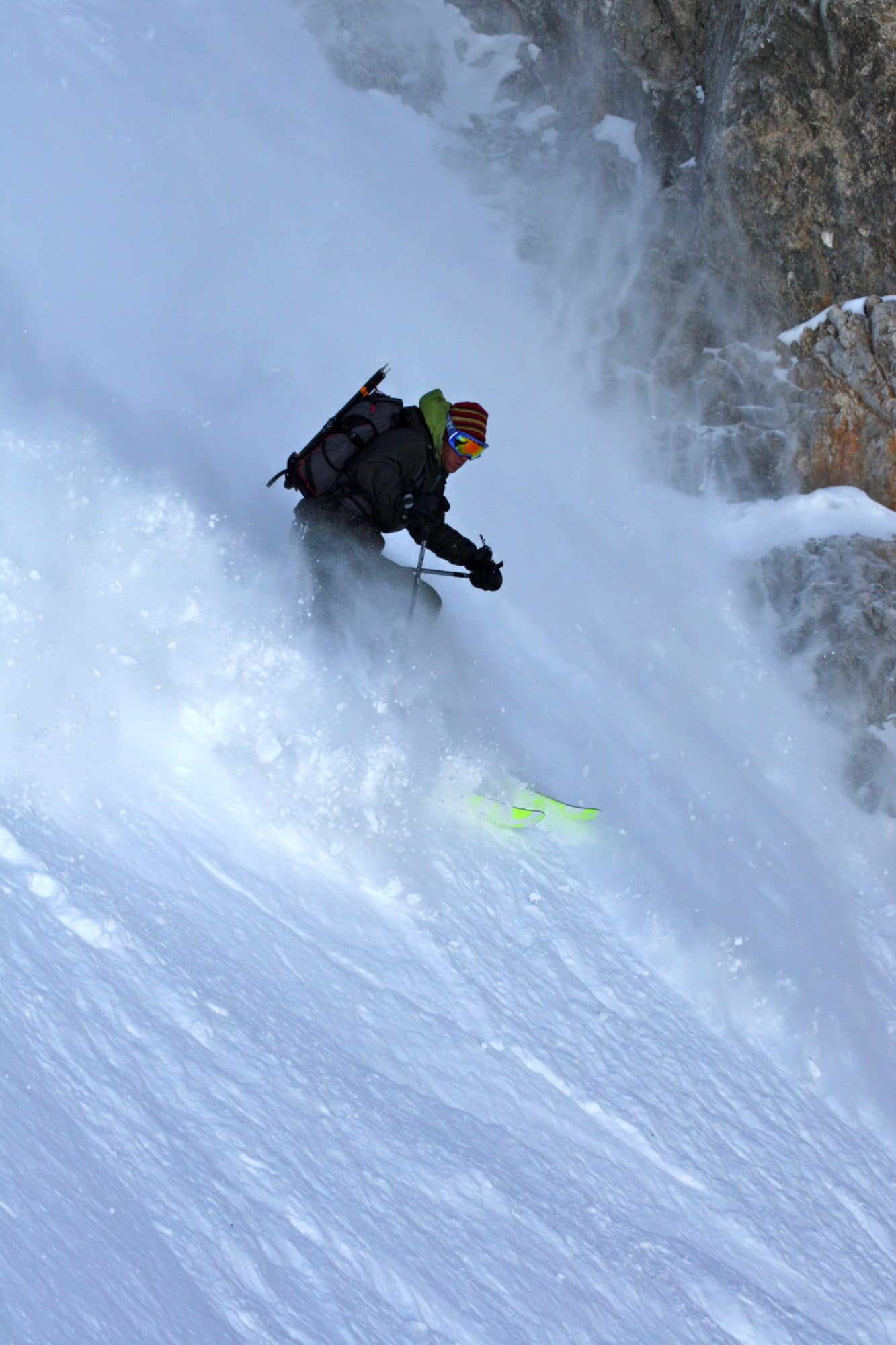
Pale de San Martino was a brilliant place at the beginning of the 2000s. In the Dolomites but without being linked to the Dolomites Super Ski area or to the big snow factories of the Sella Ronda, this magnificent sleepy and relatively forgotten area was at a disadvantage due to the long and tortuous access road.
Over thousands of years water and wind sculptured these extraordinary natural cathedrals. Until the day in 1792 when a French geologist, Déodat Gradet de Dolomieu, a member of the Knights of Jerusalem, gave this part of the Alps the name of the Dolomites. Protected to the north by the Passo Rolle which suddenly appears after the beautiful Panevegio forest (whose trees supplied the wood for Stradivarius violins), these imposing limestone structures are true monuments to the history of climbing. Notably, the Belgian royal family came here to quench their passion for mountaineering under the guidance of local guides such as Zagonel or the Scalets. They braved these impressive verticals to write the beautiful letters of romantic climbing.
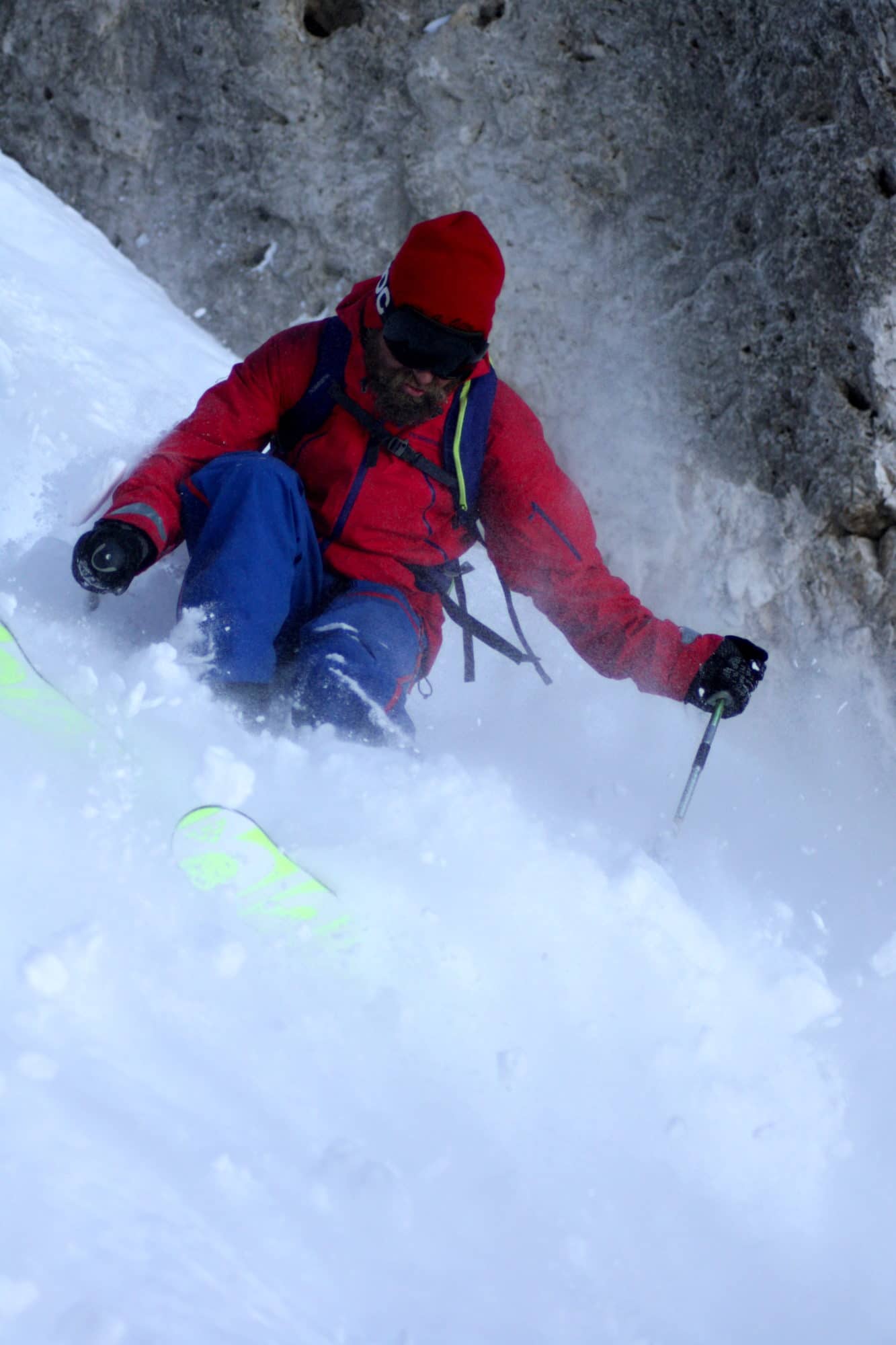
But these screens of rock also include an impressive number of downhill itineraries, true joys for steep slope skiing…
I discovered this secluded corner, and later the Dolomites, through the love of an Italian (Elena B.) who, after a winter season in Chamonix, invited me to discover this area where she grew up. Straight away I understood that these mountains where going to hold an important place in my life as a skier. The first winters spent over there were a period of transition for me. I had practically lost all my sponsors and had gained, in return, complete freedom. We lived in an old family baïta (mountain chalet) where we cooked on and heated with an open fire.
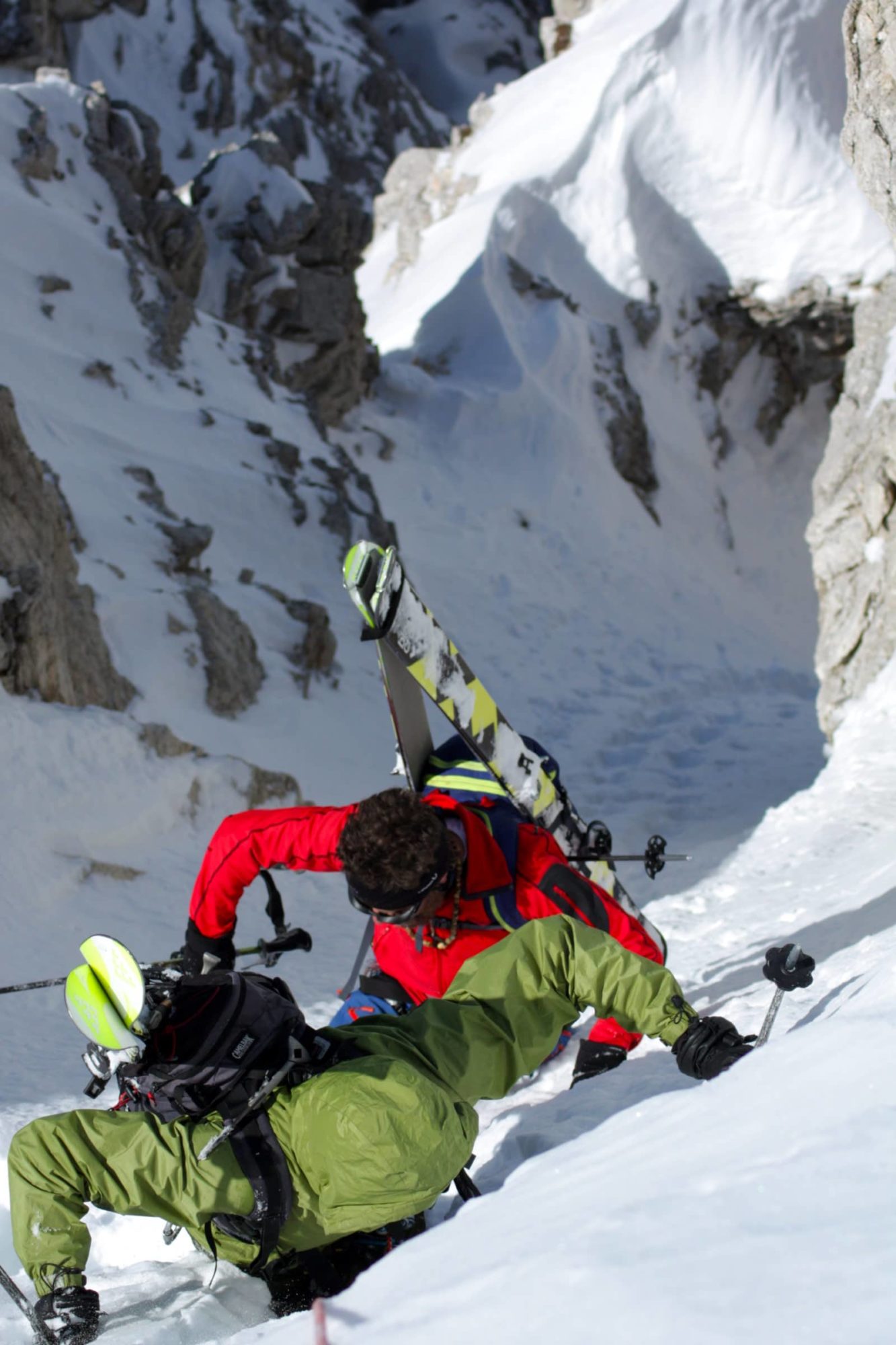
In the mornings, in the house, the temperatures were negative and a thick cloud of steam formed in front of my face. My first task was to relight the fire or cut some wood before making several rounds of black coffee. No go pro nor shoots, no social media either, but skiing every day, abundant snow and an immense territory to explore where the only tracks we came across, my ski companion ski Léo Barbiroli and I, were those of foxes or chamois.
I was stony broke but I was happy to be continuing to live my dream of skiing. I was still young, and I didn’t know what I was going to do with my life, honestly, I couldn’t have cared less. On the other hand I knew what I didn’t want to do. I often hitch hiked to the resort. I was dirty, unkempt and I smelt of wood smoke, sweat and garlic… I was no longer aware of this odour, but the heavy glowers from smart tourists did not fail to remind me of it when I climbed into the cable car.
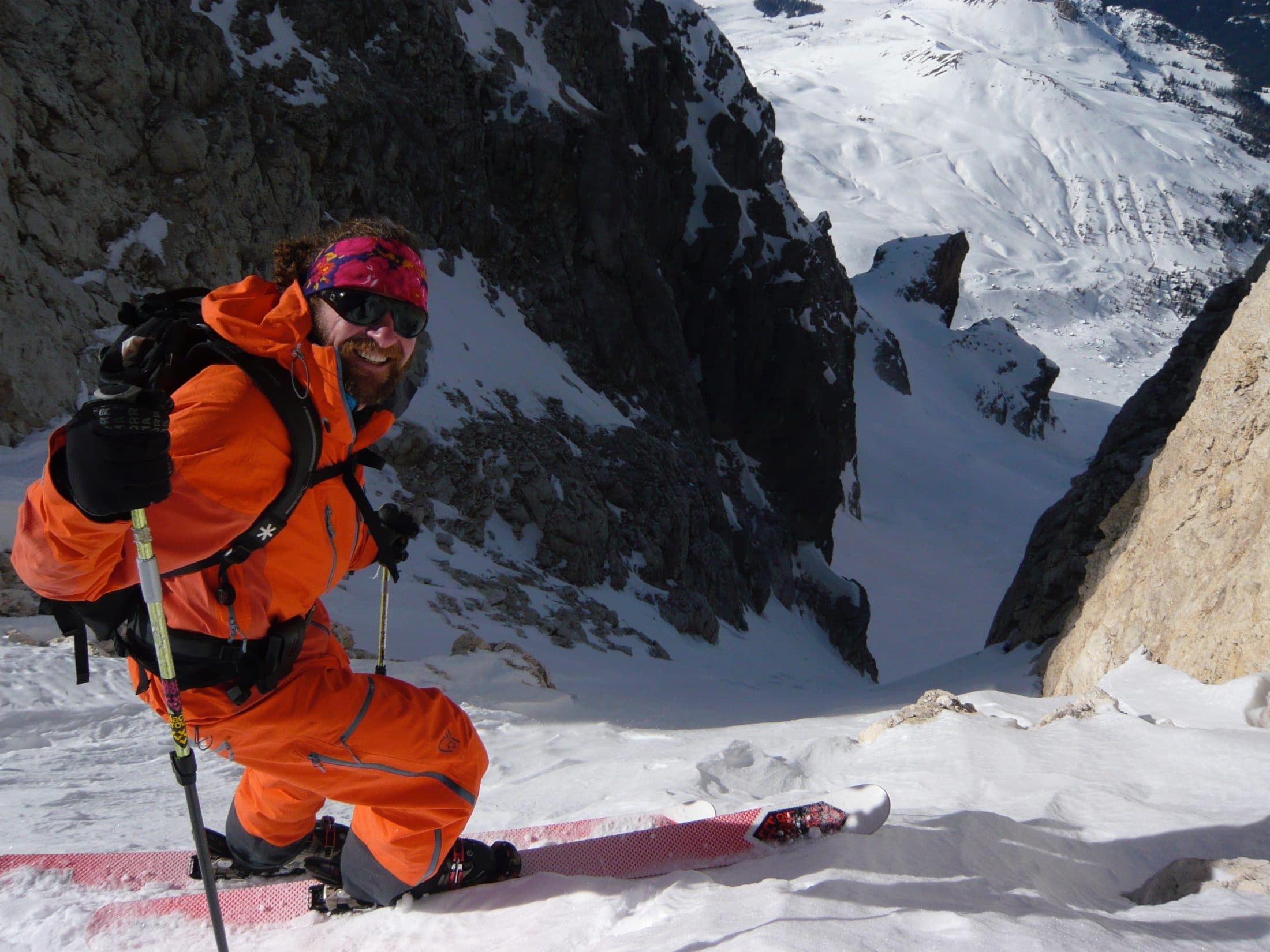
I had the chance to roam these mountains in the company of band of passionate skiers who didn’t hesitate to share and reveal some very beautiful itineraries. Leopold Barbiroli, Herman Crepas and Eric Guirardini were very enthusiastic partners and I can no longer count the number of descents and beautiful days that we concluded around a plate of charcuterie and cheese washed down with beer or a bottle of good red wine.
These days, things and changed a little and, like everywhere, after a good fall of snow, all that is accessible with gravity will be tracked out in a few hours. But the rapid evolution of the practice and above all the equipment has opened the door on to a new playground. The light weight of the skis, boots and bindings is accompanied by wider skis, more rigid boots and more reliable bindings. The entry ticket for the skier to these sometimes hidden gullies is not longer as high, physically as technically. Nevertheless, the search for new itineraries and the attentive and assiduous observation of the conditions lead to unforgettable days. And, if a skier like Eric, since become a guide, tells me each year about new descents which he has discovered, it means that this massif is still well and truly a paradise.
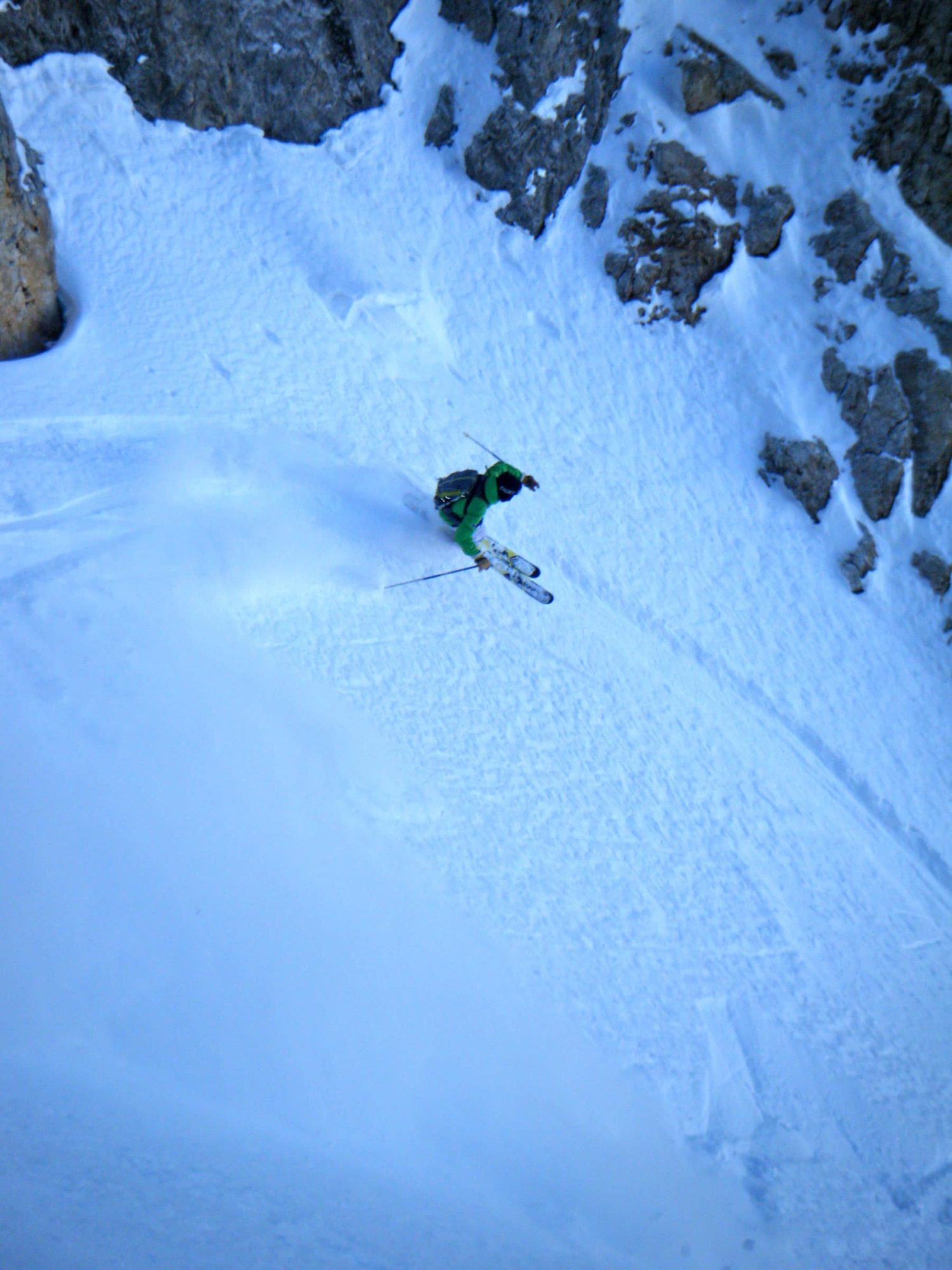
Since then, I have also played my role as a courier by allowing quite a lot of skiers and snowboarders discover this corner of the mountains. The list is long such as Seth Morison or the guides like Francois Regis-Thevenet who return regularly to the area with their friends or clients. But there are also the anonymous, talented and passionate skiers who come for a few days, or longer, to emerge themselves in a unique décor which serves as the backdrop for our adventures. In retrospect, I realise that sharing these areas has given me great pleasure. After the first winters of exploration when I skied like a wolf, alone and hungry, I felt a deep necessity to share this with others.
And, during at least fifteen years, we have experienced exceptional winters with record quantities of snow which feed our passion over and above words and almost to lunacy which still does help me sleep at night. Today when I write these lines, tears come to my eyes when I think of this incredible chance that we were able to experience during this blessed period of the gods and which count among my most beautiful winters.
Bruno Compagnet 21 December 2018
Siror, Dolomites


